A) vertical shift of units up
B) horizontal stretch of units
C) vertical shrink of units
D) horizontal shrink of units vertical shift of units
E) horizontal shrink of units
Correct Answer

verified
Correct Answer
verified
Multiple Choice
Find the inverse function of .
A)
B)
C)
D)
E)
Correct Answer

verified
Correct Answer
verified
Multiple Choice
Compare the graph of the following function with the graph of .
A) vertical shift of 10 units up
B) vertical shift of 10 units up horizontal shrink of units
C) horizontal shift of 10 units to the left horizontal shrink of units
D) horizontal shift of 10 units to the left horizontal stretch of units
E) horizontal shift of 10 units to the left vertical shift of 5 units up
Correct Answer

verified
Correct Answer
verified
Multiple Choice
Determine an equation that may represented by the graph shown below.
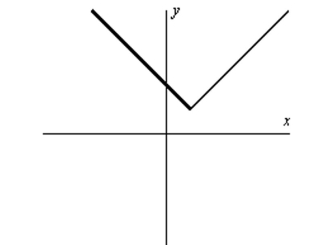
A)
B)
C)
D)
E)
Correct Answer

verified
Correct Answer
verified
Multiple Choice
Use the graph of to sketch the graph of the function indicated below.
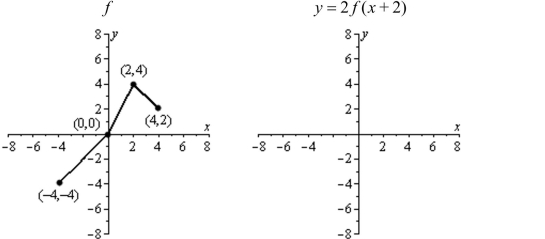
A) ![]()
B) ![]()
C) ![]()
D) ![]()
E) ![]()
Correct Answer

verified
Correct Answer
verified
Multiple Choice
Use the functions and to find .
A)
B)
C)
D)
E)
Correct Answer

verified
Correct Answer
verified
Multiple Choice
The average lengths of cellular phone calls in minutes from 1999 to 2004 are shown in the table below.
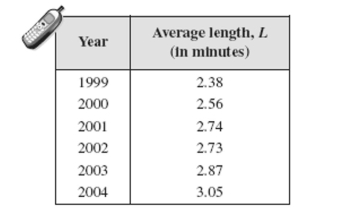 Use the regression feature of a graphing utility to find a linear model for the data. Let represent the year, with corresponding to 1999 . Use the model to predict the average lengths of cellular phone calls for the year 2015 . Round your answer to two decimal places.
Use the regression feature of a graphing utility to find a linear model for the data. Let represent the year, with corresponding to 1999 . Use the model to predict the average lengths of cellular phone calls for the year 2015 . Round your answer to two decimal places.
A) minutes
B) minutes
C) minutes
D) minutes
E) minutes
Correct Answer

verified
Correct Answer
verified
Multiple Choice
Determine the domain and range of the inverse function of the following function . , where
A) Domain: ; Range:
B) Domain: ; Range:
C) Domain: ; Range:
D) Domain: ; Range:
E) Domain: ; Range:
Correct Answer

verified
Correct Answer
verified
Multiple Choice
Plot the points and find the slope of the line passing through the pair of points.
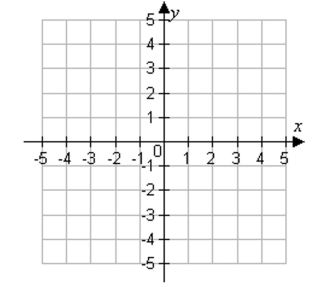
A) slope: 0
B) slope: 1
C) slope:
D) slope:
E) slope: undefined
Correct Answer

verified
Correct Answer
verified
Multiple Choice
Find all real values of such that .
A)
B)
C)
D)
E)
Correct Answer

verified
Correct Answer
verified
Multiple Choice
Determine algebraically whether the following function is one-to-one. , where
A)
B)
C)
D)
E)
Correct Answer

verified
Correct Answer
verified
Multiple Choice
Evaluate the following function at the specified value of the independent variable and simplify.
A) 20
B) 0
C)
D) 13
E) undefined
Correct Answer

verified
Correct Answer
verified
Multiple Choice
Find .
A)
B)
C)
D)
E)
Correct Answer

verified
Correct Answer
verified
Multiple Choice
Use the graphs of and to evaluate the function.
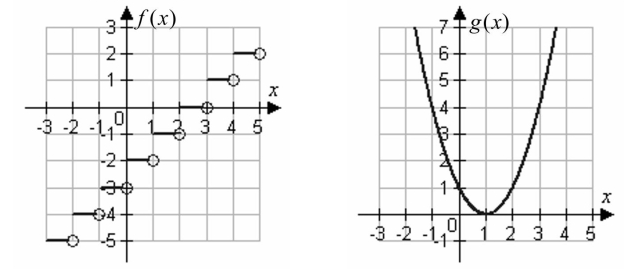
A) 9
B)
C) 0
D)
E)
Correct Answer

verified
Correct Answer
verified
Multiple Choice
Find the slope-intercept form of the line passing through the points.
A)
B)
C)
D)
E)
Correct Answer

verified
Correct Answer
verified
Multiple Choice
Find all real values of such that .
A)
B)
C)
D)
E)
Correct Answer

verified
Correct Answer
verified
Multiple Choice
Find .
A)
B)
C)
D)
E)
Correct Answer

verified
Correct Answer
verified
Multiple Choice
Use the graphs of and , shown below, to graph .
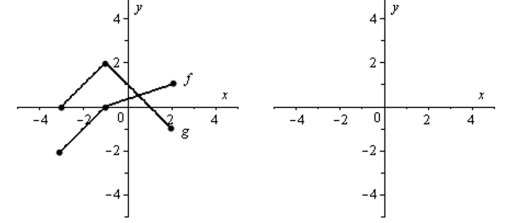
A) ![]()
B) ![]()
C) ![]()
D) ![]()
E) ![]()
Correct Answer

verified
Correct Answer
verified
Multiple Choice
Decide whether the two functions shown in the graph below appear to be inverse functions of each other.

A) yes
B) no
C) not enough information
Correct Answer

verified
Correct Answer
verified
Multiple Choice
Find the domain of the function.
A) all real numbers
B) all real numbers
C) all real numbers
D)
E)
Correct Answer

verified
Correct Answer
verified
Showing 101 - 120 of 120
Related Exams